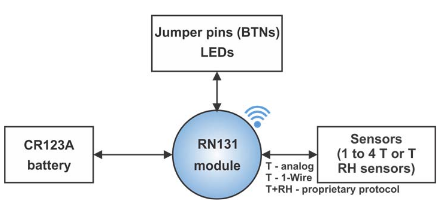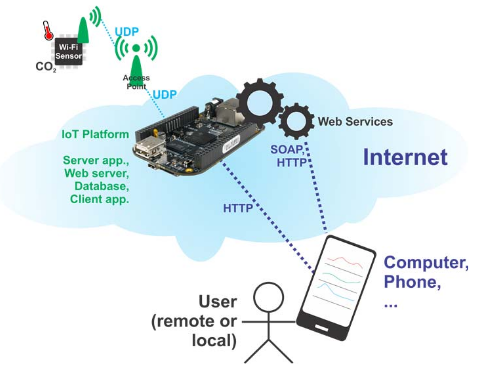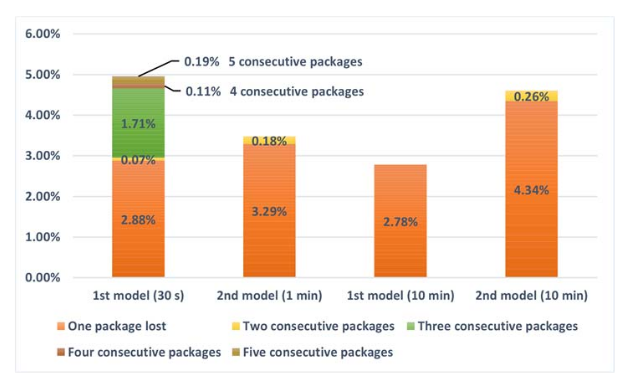ABSTRACT
This paper presents the development of a cyber- physical system that monitors the environmental conditions or the ambient conditions in indoor spaces at remote locations. The communication between the system’s components is performed using the existent wireless infrastructure based on the IEEE 802.11 b/g standards. The resulted solution provides the possibility of logging measurements from locations all over the world and of visualizing and analyzing the gathered data from any device connected to the Internet.
This work encompasses the complete solution, a cyber-physical system, starting from the physical level, consisting of sensors and the communication protocol, and reaching data management and storage at the cyber level. The experimental results show that the proposed system represents a viable and straightforward solution for environmental and ambient monitoring applications.
RELATED WORK AND CONTRIBUTION
The literature contains a large number of efforts for developing monitoring solutions that benefit from the advantages provided by wireless sensing technology. Reference presents an automated irrigation system based on a distributed wireless network of soil moisture and temperature sensors that achieves water savings of 90% compared with traditional implementations. Sentinella is a smart monitoring solution for the assessment of possible causes of power inefficiency at the photovoltaic panel level based on WSNs.
The employment of WSNs in smart grid applications and electrical energy monitoring solutions for large buildings was also investigated. A series of industrial WSNs achieving the acquisition of heterogeneous sensor signals, higher sampling rates, and higher reliability levels has been developed as well. However, most of the proposed solutions are based on the IEEE 802.15.4 standard and ZigBee applications, and they rely on gateways when the data has to be sent to the Internet.
WIRELESS SENSORS IN CYBER PHYSICAL SYSTEMS
The advances in embedded systems and information communication technologies had led to the development of sensors, which are continuously getting more powerful, smaller, and cheaper. These offer a range of advances over traditional wired sensor applications, the most important consisting in the cost reduction and simplification of deployment through the elimination of wires. All the aforementioned facts encourage the adoption of wireless sensor networks at a scale never encountered before and it is expected that in the future, this trend will not only continue but also become even more accentuated.
Furthermore, the development of CPSs brought new demands and opportunities for the use of WSNs, the combination of advanced sensing, measurement and process control having applicability across a wide range of domains, such as transportation, energy, civil infrastructure, environmental monitoring, defense, smart buildings, manufacturing and production, and others.
SYSTEM ARCHITECTURE
A graphical representation of the entire CPS used for monitoring the environment in indoor or outdoor spaces, where IEEE 802.11 b/g network coverage exists, is presented in Fig.1.
Fig.1. The two main system components consist of the following. 1) Wi-Fi Sensors: Low-power wireless sensors based on the programmable system-on-chip 3 (PSoC 3) device and on the RN-131C/G wireless local area network (WLAN) module. 2) IoT Platform: A BeagleBone Black embedded computer running the server application. The detailed description of the hardware and software of the two system components will be given in the remainder of the section.

Fig.2. Wi-Fi sensor hardware architecture the first model
The embedded application stack of the devices using the architecture in Fig.2 is implemented on the Wi-Fi chip and uses the Embedded Configurable Operating System (eCos) operating system and the services provided by the software development kit for specifying the measurement and communication actions. The sensors that can be attached to the node measure the temperature (analog PT1000 and digital DS18B20 or temperature and relative humidity (DHT22).

Fig.5. Monitoring application
An open source licensed small memory footprint Web server, namely, lighttpd, was installed on the IoT platform for remote data visualization (Fig.5).
EXPERIMENTAL RESULTS

Fig.12. Package loss for two sensor nodes
Fig.12 shows the package loss ratio of two sensor nodes connected to the same access point. The architecture of one of the sensors is the one described first in this paper, while the second sensor’s architecture is the one based on the PSoC device. The IoT platform is also in the same network. For the first set of data, the devices were set to measure the environmental parameters using a period of 30s for the first model, the one based on the RN-131 WLAN module and a period of 60s for the device having the PSoC microcontroller as core.
CONCLUSION
The development of a CPS, which monitors environmental parameters based on the existent IEEE 802.11 infrastructure, was presented. It employs sensors measuring the ambient or the environment, which send messages to an IoT platform using UDP. The communication protocol and the design of the nodes help in achieving low power consumption, offering battery lifetimes of several years. The system eliminates bulky solutions, provides the possibility of logging data where Wi-Fi network coverage exists, and can be used in a wide range of monitoring applications. Future work intends to enhance the reliability and security of the proposed system.
Source: Wineyard University
Authors: George Mois | Teodora Sanislav | Silviu C.Folea
>> Top IoT Projects using Microcontroller for Engineering Students
>> Latest 50+ IoT based Security Projects for Engineering Students
>> 200+ IoT Led Projects for Final Year Students
>> IoT Software Projects for Final Year Students
